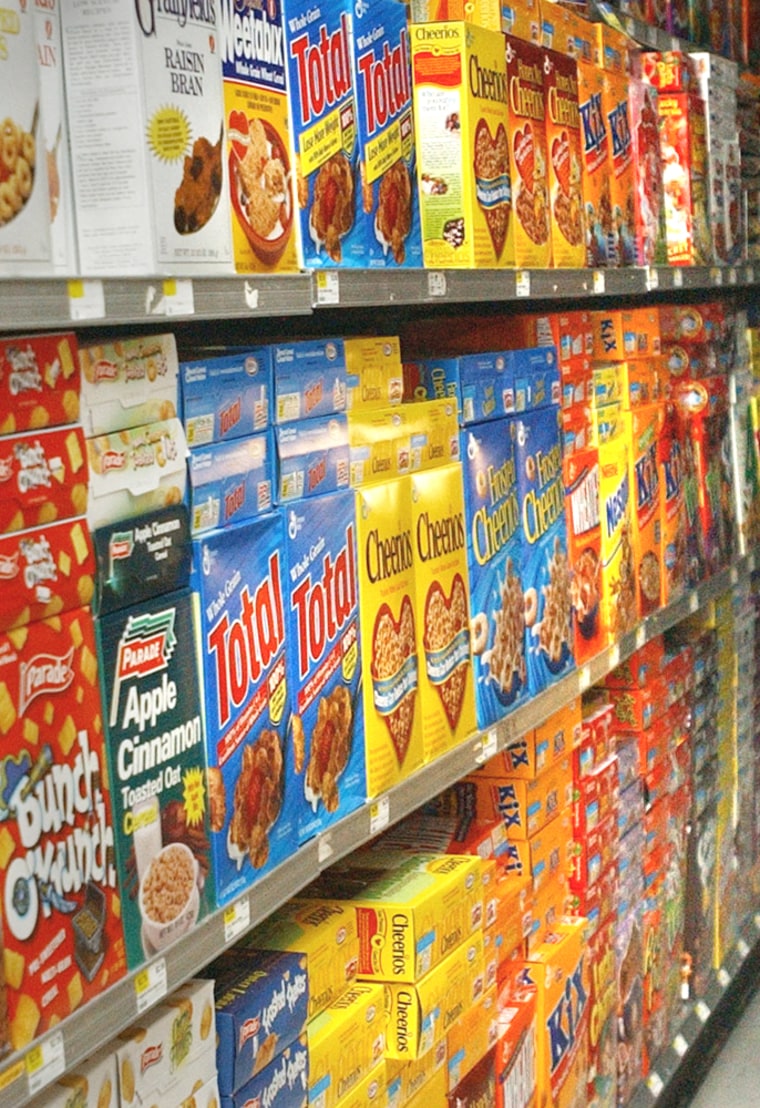They’re the two brand names that America has been waking up with for decades. Every morning, millions of Americans shovel a spoonful of something made by Kellogg's or General Mills.
Cereal is a $7.5 billion business in the U.S. And it's a tough business. Right now, Kellogg's and General Mills cater to every imaginable taste — from Wheaties to Lucky Charms, Fruit Loops to Rice Krispies — and these two giants each have just over 32 percent of the market.
Of the top 5 best-selling cereals in America, General Mills has three: Cheerios, Honey Nut Cheerios, and Cinnamon Toast Crunch.
But by most accounts, the market is saturated — and soggy. So these two titans have each branched out.
In addition to breakfast cereals, the food fight now includes toaster snacks, yogurt, granola bars, waffles, cookies, crackers, cakes, and dinner rolls.
"Both companies diversified away from cold cereal category a few years ago,” said Eric Katzman a Deutsche Bank analyst. “Kellogg's bought Keebler, General Mills bought Pillsbury. If you look at who's benefited from that acquisition most — the answer is Kellogg's."
Analysts are divided on the better buy here. Katzman believes General Mills paid too much for the Pillsbury doughboy and his brands — some $10.5 billion in 2001. Combining the two companies has proven to be difficult. And General Mills is currently under investigation by the Securities & Exchange Commission for accounting issues.
Also hanging over the company's stock are fears that Pillsbury's former owner, Diageo, will unload the 50 million shares of General Mills that it still owns.
"It's probably fair to say they've lost some focus,” said Katzman. “Growth has been more difficult to come by, but perhaps more importantly, profitable growth has been more difficult to come by for (General) Mills."
But Citigroup analyst David Driscoll isn't concerned.
"General Mills is now left with ... the best stable of brands over such a wide base," he said.
By all accounts, Kellogg's has found its $4.5 billion purchase of Keebler much easier to swallow. But the cookie business has recently started to crumble, falling 2 percent in 2002, and down 5 percent in 2003. While its snack business is strong, Kellogg's debt is now almost $7 billion.
So who's the better buy? The tiger or the munchkin? Deutsche Bank is neutral on both stocks.
But not Citigroup's Driscoll.
"It's my opinion that there's no contest here,” he said. “General Mills is a more attractive value: Higher sales growth and earnings growth going forward."
Kellogg's recently said 2004 earnings will come in at the high end of guidance. General Mills, meanwhile, lowered its 2004 guidance — citing an increase in commodity prices.
Food companies generally are trading close to 17 time the industry’s 2004 estimated earnings. Hershey, for example, trades at 19; Kellogg's at about 18, while General Mills trades at about 15.5.
